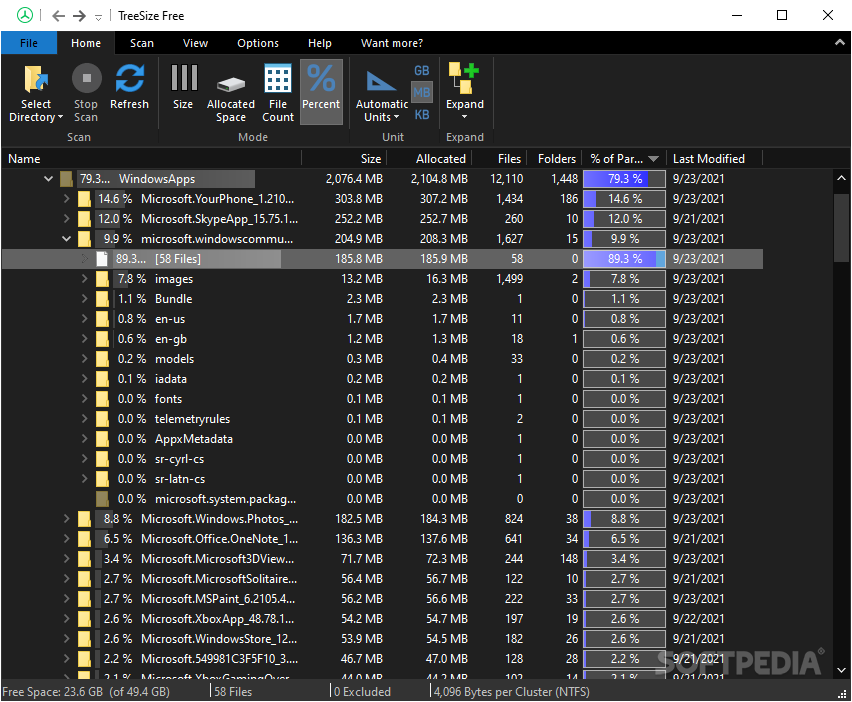

- TREESIZE PRO FREE ALTERNATIVE INSTALL
- TREESIZE PRO FREE ALTERNATIVE PROFESSIONAL
- TREESIZE PRO FREE ALTERNATIVE WINDOWS
Unlike the CSV table-view they represent a hierarchical tree view and are better suitable for listing file and folder structures. XML files can be viewed in a web browser. If you want to export all the files and folders listing as a tree structure use the XML format. The CSV files are supported natively in Microsoft EXCLE and will be displayed in table format. If you want to export the file and folder sizes to EXCEL use the CSV file format. There are many options to customize the export settings. You can find all the command line options and their most up to date list in the application help file. Using the option the GUI will not be displayed during the scan and the application will exit after the command line actions are processed.
TREESIZE PRO FREE ALTERNATIVE PROFESSIONAL
Folder Size Command Line ParametersĬommand-Line Parameters Usage: (Available only in Professional version)įolderSize -scan “F:\mp3” -exp "d:\mp3_ will be replaced with the current date and time. This is the best solution for listing the folder sizes in Windows. The tool uses resources only when you start it. That is to say, unlike other tools it will not slow the system down in any way.
TREESIZE PRO FREE ALTERNATIVE INSTALL
Folder Size does not install any services, file hooks, or shell extensions to your system.
TREESIZE PRO FREE ALTERNATIVE WINDOWS
Such a menu is natively supported by Windows Explorer and does not have any performance impact. Though Windows provides several ways to show folder sizes in Windows Explorer, they are not very convenient if you want to perform a disk cleanup or view all folder sizes simultaneously.įolder Size adds a Windows Explorer context menu "Scan with Folder Size" and you can use it to view the size of any folder and all its subfolders instantly. The article includes all the available options to display the folder sizes in Windows without using external tools. Read this article if you want to know why Folder sizes in Windows 11, 10, 8, 7, Vista, XP, and 2000, are missing. Many users think that this should be included by default and that they should not need an external tool, but they are totally wrong. Windows Explorer is the core file management tool in Microsoft Windows, but it does not list folder size. Save/Load the scanned data for the file sizes and folder sizes so that you can compare it with subsequent scans.




 0 kommentar(er)
0 kommentar(er)
